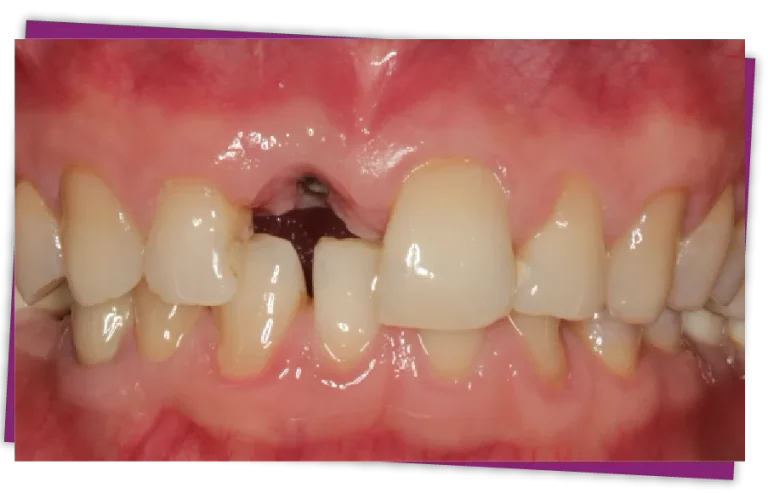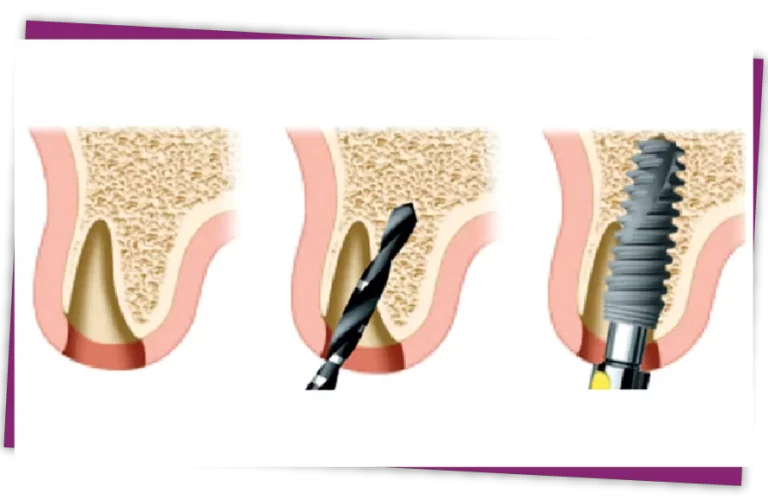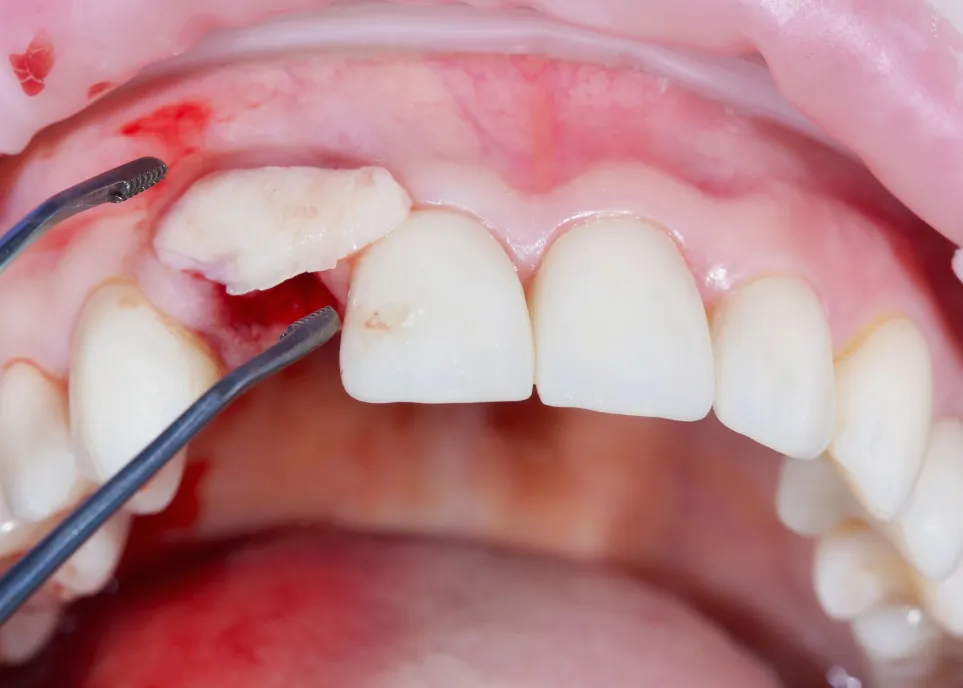IMPLANT PLACEMENT AFTER TEETH REMOVAL
Dental implants are the most comprehensive solution today to have teeth that feel natural, andachieve up to 90% of the chewing function. Dental implants, tooth extraction and Implant placement are done in one operation, also known as Implant Placement After Teeth Removal. It is increasingly and widely applied to new teeth extraction technique.
IMPLANT PLACEMENT PROCESS
The surgeon exposes the root, using a non-traumatic extraction technique to gently remove the root without damaging the alveolar bone and gum tissue.
After taking the teeth out, the surgon will place the Implant and add bone graft if necessary.
During the implant placement surgery, the alveolar bone is in an ideal state to place the Implant. If the extraction is done not in accordance with the technical expertise, it will be easy to break the alveolar bone, and it will take time to regenerate before implantation. Therefore, it is necessary to extract teeth using non-traumatic techniques, to ensure that the alveolar bone and gum tissue are not damaged.


Bone or tissue grafting
Bone and tissue grafting are essential procedures used to restore the foundation that supports your teeth and gums. When bone loss or gum recession occurs—often due to tooth loss, gum disease, trauma, or infection—these grafting treatments help rebuild structure, enhance stability, and prepare the mouth for long-term dental success.
Bone and tissue grafts not only improve oral health but also create the strong, healthy foundation necessary for procedures such as dental implants, crowns, bridges, and other restorative treatments.
Why Bone or Tissue Grafting Is Needed
Bone or gum tissue may need to be rebuilt when:
- A tooth has been missing for a long time
- Gum disease has caused bone or tissue loss
- The jawbone has weakened or shrunk
- You are preparing for dental implant placement
- A tooth extraction has left a hollow or thin area
- Trauma or infection has damaged bone or gums
Without proper support, teeth can become loose, implants may fail, and overall oral health can continue to decline. Grafting restores strength, structure, and protection.
Bone Grafting – Rebuilding the Jawbone
-
- Restore lost bone density
- Provide solid support for implants
- Preserve facial structure and prevent sagging
- Strengthen areas damaged by gum disease
- Prevent further bone loss after extractions
Types of Bone Grafts
- Socket Preservation
- Placed immediately after a tooth extraction to prevent bone collapse.
- Socket Preservation
- Used when bone volume needs to be rebuilt for future implants.
- Sinus Lift
- Adds bone to the upper jaw beneath the sinus for implant placement.

Tissue (Gum) Grafting – Protecting Your Gumline
-
- Tooth sensitivity
- Higher risk of cavities
- Root damage
- Uneven gumlines
- A “long-tooth” appearance
Benefits of Tissue Grafting
- Reduces tooth sensitivity
- Prevents further gum recession
- Protects tooth roots from decay
- Creates a smoother, more attractive gumline
- Supports long-term oral health







